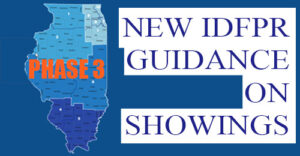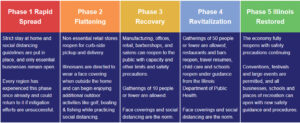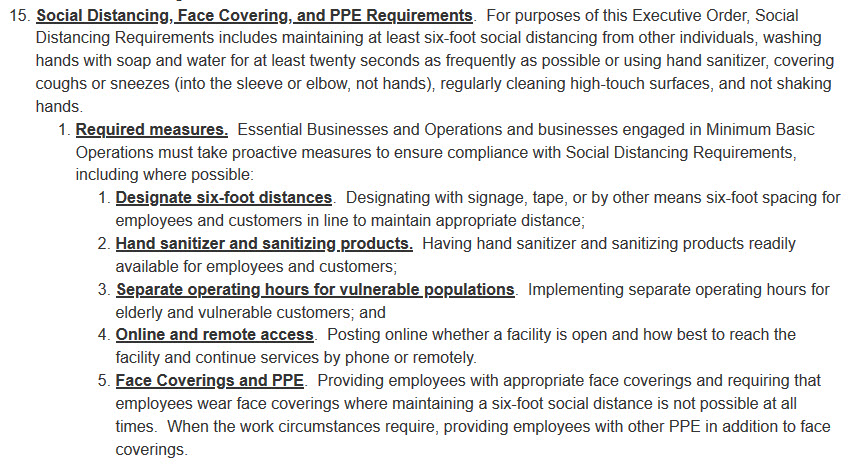 We’re in Phase 3 – Now what?
We’re in Phase 3 – Now what?
Unless you’ve haven’t been paying attention for the last week or so, you probably know that the entire State (including Chicago) has now moved into “Phase 3” of the Governor’s Restore Illinois Plan which has been titled as the “Recovery” phase. The Stay at Home portion of Executive Order 32 has been lifted. During Phase 2, as readers of this blog know, landlords were prohibited in any circumstance from performing a showing of any “occupied rental property”. What rules apply now that we are out of Phase 2 and into Phase 3?  The Illinois Department of Financial and Professional Regulation Division of Real Estate has issued new guidance with respect to showings.
The Illinois Department of Financial and Professional Regulation Division of Real Estate has issued new guidance with respect to showings.
Under the new rules, during Phase 3, the general rule is that “…individual and group showings consisting of the licensee and others, not to exceed a total of ten people including the licensee, are permitted. Physical distancing and the use of face coverings are still required. The use of disposable gloves and foot booties are also encouraged.” Great, right? Not so fast. The guidance breaks down different showing situations, again, based on occupancy.
For occupied rental properties, the IDFPR guidance indicates that individual or group showings (of 10 or fewer people) are allowed if the tenant consents to the showing and the showing participants comply with the social distancing and PPE requirements of Executive Order 2020-32. The guidance also provides that any showing be scheduled in advance with appropriate notice to the tenant.
 So, maybe this isn’t so great.
So, maybe this isn’t so great.
The requirements of Executive Order 2020-32 require social distancing and personal protective equipment. Landlords should be prepared to follow physical distancing, use face coverings, and the IDFPR also encourages the use of disposable gloves and foot booties.

Landlords would also be well advised to keep the touching of tenant’s possessions, appliances, and wall and counter surfaces to a minimum. Landlords should also be prepared to sanitize any areas that are handled. A showing is going to require some advance thought so that landlords can keep their tenants and prospective tenants safe.
What about that tenant who doesn’t want to let the landlord in? The guidance “encourages” landlords and tenants “to work together” to reach an amicable solution. Of course, there are some tenants for whom no solution will be workable and who will insist that the pandemic requires them to remain in their property without disturbance. As there is no further guidance and no indication as to what remedy, if any, is available for landlords whose tenants refuse access, there is likely little recourse available during the pandemic. One possible remedy might be an appeal to CRLTO section 5-12-060 which provides remedies to landlords when tenants improperly deny access. That said, I’m not sure how many landlords might want to bring such a case at a time like this. It would be nice if the mayor could suggest that tenants “give some grace” to landlords as well.
For vacant properties, the rules are much the same, except there is no requirement for tenant consent. In those cases, a showing may be conducted provided the group is limited to ten or fewer people and the executive order requirements are followed.
Like the rest of the State of Illinois, we’ve taken a step. It might not be the step landlords wanted, but it is, at least, something. Based upon the last guidance provided, I’m not hopeful that we will hear much more on this topic. Unless we do, landlords will need to remain thoughtful and should consider the best ways to make access with cooperative tenants for showings.
